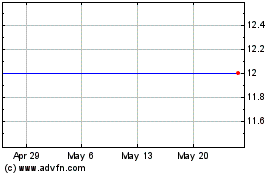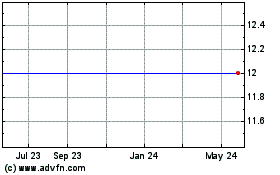Forest Laboratories, Inc. (NYSE: FRX) announced today that
TeflaroTM (ceftaroline fosamil), a broad-spectrum bactericidal
cephalosporin with activity against both gram-positive and
gram-negative microorganisms, was approved by the U.S. Food and
Drug Administration (FDA) for the treatment of community-acquired
bacterial pneumonia (CABP), including cases caused by Streptococcus
pneumoniae bacteremia, and acute bacterial skin and skin structure
infection (ABSSSI), including cases caused by methicillin-resistant
Staphylococcus aureus (MRSA). The efficacy and safety of Teflaro
was established in pivotal trials including 1219 patients treated
with the drug.
Teflaro is a member of the cephalosporin class of antibiotics,
the most frequently prescribed class of antibiotics in the world.
Forest expects Teflaro to be available to wholesalers by January
2011.
“Forest recognizes the enormous burden of disease associated
with community-acquired bacterial pneumonia and acute bacterial
skin and skin structure infections, and we are extremely pleased to
see that our first product in this category has obtained approval
for both of these disease indications,” said Dirk Thye, President
of Cerexa, a wholly-owned subsidiary of Forest Laboratories, Inc.
“We eagerly anticipate the commercial launch of Teflaro and remain
committed to bringing additional new treatments to market that
target infectious diseases.”
Howard Solomon, Chairman and Chief Executive Officer of Forest
said, “Our success in gaining approval for Teflaro is a significant
milestone for our new anti-infective franchise. Achieving a first
cycle approval from the FDA is a tribute to the excellent design
and execution of a complex clinical development program as well as
the virtues of the product itself. Teflaro is the fourth new drug
approval in the last three years from the fourth different division
of the FDA. We are very proud of all of our Forest colleagues who
have contributed to Teflaro’s acquisition, development and
approval. We look forward to providing more treatment options for
healthcare providers and patients in the future.”
FOCUS I and FOCUS II Phase 3 Clinical Study Results
FOCUS I and FOCUS II studied adult patients who were
hospitalized with moderate to severe CABP requiring treatment with
intravenous antimicrobials.
To evaluate the treatment effect of Teflaro, a responder
analysis was conducted in CABP patients. A responder was defined as
a patient who on Day 4 of therapy was in stable condition based on
accepted clinical criteria; this was defined as normalization of
vital signs and improvement from baseline on at least one
respiratory symptom (cough, dyspnea, pleuritic chest pain, or
sputum production) while not worsening on any of these four
respiratory symptoms. This analysis of the pivotal trial data
served as an important element of the FDA’s efficacy
evaluation.
In FOCUS I, Teflaro-treated patients had a response rate of
69.6% compared with a response rate of 58.3% for
ceftriaxone-treated patients on Day 4. In FOCUS II, Teflaro-treated
patients had a response rate of 69% compared with a response rate
of 61.4% for ceftriaxone-treated patients on Day 4.
The protocol-specified analyses included clinical cure rates at
the test of cure (TOC; 8-15 days after end of therapy). In FOCUS I,
Teflaro-treated patients had a clinical cure rate of 86.6% compared
with a rate of 78.2% in ceftriaxone-treated patients in the
clinically evaluable (CE) population. In FOCUS II, Teflaro
treated-patients had a clinical cure rate of 82.3% compared with a
rate of 77.1% in ceftriaxone-treated patients in the CE
population.
CANVAS I and CANVAS II Phase 3 Clinical Study Results
The CANVAS I and CANVAS II trials evaluated Teflaro monotherapy
versus vancomycin plus aztreonam in adult patients with complicated
skin and skin structure infections caused by gram-positive and
gram-negative bacteria.
To evaluate the treatment effect of Teflaro, a responder
analysis was conducted in ABSSSI patients with either a major
abscess with ≥ 5 cm of surrounding erythema, wound infection, or
deep/extensive cellulitis requiring treatment with IV
antimicrobials. A responder was defined as a patient who on Day 3
achieved both cessation of lesion spread and absence of fever.
In CANVAS I, Teflaro-treated patients had a response rate of 74%
compared with a response rate of 64.6% for vancomycin plus
aztreonam-treated patients on Day 3. In CANVAS II, Teflaro-treated
patients had a response rate of 74% compared with a response rate
of 68.1% for vancomycin plus aztreonam-treated patients on Day 3.
This analysis of the pivotal trial data served as an important
element of the FDA’s efficacy evaluation.
The protocol-specified analyses included clinical cure rates at
the TOC (8-15 days after the end of therapy). In CANVAS I,
Teflaro-treated patients had a clinical cure rate of 91.1% compared
with a rate of 93.3% in vancomycin/aztreonam-treated patients in
the CE population. In CANVAS II, Teflaro-treated patients had a
clinical cure rate of 92.2% compared with a rate of 92.1% in
vancomycin/aztreonam-treated patients.
Safety
Each of the studies also indicated that Teflaro was
well-tolerated. The overall rate of adverse events was comparable
between the two treatment groups. The overall discontinuation rate
for Teflaro-treated patients was 2.7% compared to a rate of 3.7%
for the comparator group-treated patients. The most common adverse
reactions occurring in > 2% of patients receiving Teflaro in the
pooled Phase 3 clinical trials were diarrhea, nausea, and rash.
About TeflaroTM (ceftaroline fosamil)
Teflaro is a broad-spectrum bactericidal cephalosporin with
activity against both gram-positive pathogens and gram-negative
pathogens. Teflaro is indicated for the treatment of CABP,
including cases caused by Streptococcus pneumoniae bacteremia, and
ABSSSI, including cases caused by MRSA. In clinical trials, Teflaro
was generally well-tolerated with an adverse event profile
consistent with the cephalosporin class of antibiotics.
Forest obtained the worldwide rights (excluding Japan, where
Takeda Pharmaceuticals holds rights) to Teflaro in 2007 when it
acquired Cerexa, Inc., a privately held biopharmaceutical company.
In August 2009, Forest Laboratories and AstraZeneca (NYSE:AZN)
entered into a definitive collaboration agreement to co-develop and
commercialize ceftaroline fosamil in all markets outside the U.S.,
Canada and Japan.
Indications
Teflaro is indicated for the treatment of acute ABSSSI caused by
susceptible bacterial isolates of the following Gram-positive and
Gram-negative microorganisms: Staphylococcus aureus (including
methicillin-susceptible and -resistant isolates), Streptococcus
pyogenes, Streptococcus agalactiae, Escherichia coli, Klebsiella
pneumoniae, and Klebsiella oxytoca
Teflaro is also indicated for the treatment of CABP caused by
susceptible bacterial isolates of the following Gram-positive and
Gram-negative microorganisms: Streptococcus pneumoniae (including
cases with concurrent bacteremia), Staphylococcus aureus
(methicillin-susceptible isolates only), Haemophilus influenzae,
Klebsiella pneumoniae, Klebsiella oxytoca, and Escherichia
coli.
Important Safety Information
Contraindications
Known serious hypersensitivity to Teflaro or other members of
the cephalosporin class. Anaphylaxis and anaphylactoid reactions
have been reported with ceftaroline.
Warnings and Precautions
Hypersensitivity Reactions
Serious hypersensitivity (anaphylactic) reactions and serious
skin reactions have been reported with beta-lactam antibiotics,
including ceftaroline. Exercise caution in patients with known
hypersensitivity to beta-lactam antibiotics including Teflaro.
Before therapy with Teflaro is instituted, careful inquiry about
previous hypersensitivity reactions to other cephalosporins,
penicillins, or carbapenems should be made. If this product is to
be given to penicillin or other beta-lactam-allergic patient,
caution should be exercised because cross sensitivity among
beta-lactam antibacterial agents has been clearly established. If
an allergic reaction to Teflaro occurs, the drug should be
discontinued. Serious acute hypersensitivity (anaphylactic)
reactions require emergency treatment with epinephrine and other
emergency measures, that may include airway management, oxygen,
intravenous fluids, antihistamines, corticosteroids, and
vasopressors as clinically indicated.
Clostridium difficile-Associated Diarrhea
Clostridium difficile-associated diarrhea (CDAD) has been
reported for nearly all antibacterial agents including Teflaro, and
may range in severity from mild diarrhea to fatal colitis. Careful
medical history is necessary because CDAD has been reported to
occur more than 2 months after the administration of antibacterial
agents. If CDAD is suspected or confirmed, antibacterials not
directed against C. difficile should be discontinued, if
possible.
Development of Drug-Resistant Bacteria
Prescribing Teflaro in the absence of a proven or strongly
suspected bacterial infection is unlikely to provide benefit to the
patient and increases the risk of the development of drug-resistant
bacteria.
Direct Coombs Test Seroconversion
In the pooled Phase 3 CABP trials, 51/520 (9.8%) of patients
treated with Teflaro compared to 24/534 (4.5%) of patients treated
with ceftriaxone seroconverted from a negative to a positive direct
Coombs’ test result. No clinical adverse reactions representing
hemolytic anemia were reported in any treatment group. If anemia
develops during or after treatment with Teflaro, drug-induced
hemolytic anemia should be considered. If drug-induced hemolytic
anemia is suspected, discontinuation of Teflaro should be
considered and supportive care should be administered to the
patient if clinically indicated.
Drug Interactions
No clinical drug-drug interaction studies have been conducted
with ceftaroline fosamil. In vitro studies in human liver
microsomes indicated that neither ceftaroline fosamil nor
ceftaroline inhibits the major cytochrome P450 isoenzymes.
Therefore neither ceftaroline fosamil nor ceftaroline are expected
to inhibit or induce the clearance of drugs that are metabolized by
these metabolic pathways in a clinically relevant manner.
Use in Specific Populations
For pregnant or nursing mothers, ceftaroline fosamil should only
be used if the potential benefit outweighs the potential risk to
the fetus or child.
Safety and effectiveness in pediatric patients has not been
studied.
Because elderly patients ≥ 65 years of age are more likely
to have decreased renal function and ceftaroline is excreted
primarily by the kidney, care should be taken in dose selection in
this age group as in younger patients with impaired renal
function
Dosage adjustment is required in patients with moderately (30 to
≤ 50 mL/min) or severely ( 2% of patients receiving Teflaro in
the pooled Phase 3 clinical trials were diarrhea, nausea, and
rash.
About CABP Requiring Hospitalization
In 2007, pneumonia was the eighth leading cause of death in the
United States and the number-one cause of death from infectious
diseases.1 The cost of care for patients with CABP in the U.S. has
been estimated to be more than $10 billion annually.
About ABSSSI
ABSSSI are among the most common infections treated in the
hospital setting and are caused by both gram-positive and
gram-negative pathogens. MRSA is the most frequent cause of ABSSSI
presenting to emergency departments in the U.S. and were reported
as the cause of more than 18,000 deaths in 2005.2
About Forest Laboratories
Forest Laboratories’ (NYSE: FRX) longstanding global
partnerships and track record developing and marketing
pharmaceutical products in the United States have yielded its
well-established central nervous system and cardiovascular
franchises and innovations in anti-infective medicine. The
Company’s pipeline, the most robust in its history, includes
product candidates in all stages of development across a wide range
of therapeutic areas. The Company is headquartered in New York, NY.
To learn more, visit www.FRX.com.
Except for the historical information contained herein, this
release contains forward-looking statements within the meaning of
the Private Securities Litigation Reform Act of 1995. These
statements involve a number of risks and uncertainties, including
the difficulty of predicting FDA approvals, the acceptance and
demand for new pharmaceutical products, the impact of competitive
products and pricing, the timely development and launch of new
products, and the risk factors listed from time to time in Forest
Laboratories' Annual Report on Form 10-K, Quarterly Reports on Form
10-Q, and any subsequent SEC filings.
1 Xu J National vital Statistics Reports, Vol.58, No.1 2009,
p18.
2 Klevens R, Morrison M, Nadle J et al. Invasive
Methicillin-Resistant Staphylococcus aureus Infections in the
United States. Journal of the American Medical Association. 2007;
298(15):1763-1771
Forest Road Acquisition (NYSE:FRX)
Historical Stock Chart
From Jun 2024 to Jul 2024

Forest Road Acquisition (NYSE:FRX)
Historical Stock Chart
From Jul 2023 to Jul 2024
